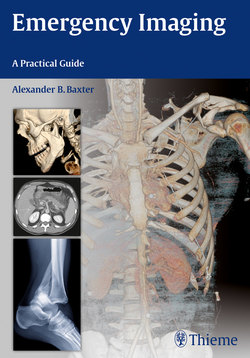Читать книгу Emergency Imaging - Alexander B. Baxter - Страница 89
На сайте Литреса книга снята с продажи.
Оглавление75
2Brain
The emergent diagnosis of GBM andother brain tumors is often made by non-enhanced CT, which shows an irregularhypodense parenchymal mass with sur-rounding vasogenic cerebral edema. If con-trast is administered, the margins invariablyshow enhancement. MRI may be the initialstudy, especially in patients who do notpresent to an emergency department.
Once diagnosed, MRI with gadolinium andmultiplanar images is the most appropriateexamination for comprehensive preoperativeevaluation. The typical appearance is thatof a heterogenous mass within the hemi-spheric white matter, with irregular, enhanc-ing margins and central low T1 or high T2signal corresponding to necrosis. Infiltrating glioma cells have been identified well beyond the apparent margins of the primary tumor,and discontinuous foci can develop, indicat-ing migration along white matter tracts orspread via the CSF spaces (Fig. 2.32).
◆Glioblastoma
Glioblastoma multiforme (GBM) is the most common adult primary brain tumor. It is a high-grade malignancy with poor prognosis; the average survival with treat-ment is 15 months or less. Most are dis-covered in the sixth and seventh decades, and patients usually present with a slowly progressive localizable neurologic deficit, symptoms of increased intracranial pres-sure (headache, nausea, vomiting, cogni-tive impairment), or new-onset seizure. Tumor cells migrate along white matter tracts and can traverse the corpus callo-sum to involve both hemispheres (“butter-fly glioma”). Neovascularity and necrosis are defining pathologic features.
Most malignant astrocytomas are spo-radic, but certain genetic syndromes are associated with an increased incidence, including neurofibromatosis type 1 and Li-Fraumeni and Turcot syndromes.
Fig. 2.32a–f a–d Glioblastoma. (a,b) NCCT shows a 4-cm left posterior frontal cortical mass with ill-dened borders, adjacent vasogenic edema, sulcal eacement, and minimal subfalcine shift. (c) On T2-weighted MRI the mass is heterogenous with areas of cystic change. Vasogenic edema is more apparent. (d) On postgado-linium T1-weighted MRI there is heterogeneous tumor enhancement with surrounding edema and central low signal intensity change (necrosis).
e,f Glioblastoma “buttery glioma.” (e) NCCT shows a hyperdense mass that involves the genu of the corpus callosum and extends into the white matter of both frontal lobes. Large amount of associated vaso-genic edema. Thefrontal horn of the left lateral ventricle is compressed with mild enlargement of the right frontal horn and ventricular atria. (f) Postgadolinium T1-weighted MRI shows heterogenous enhancement with central low signal changes (necrosis).
